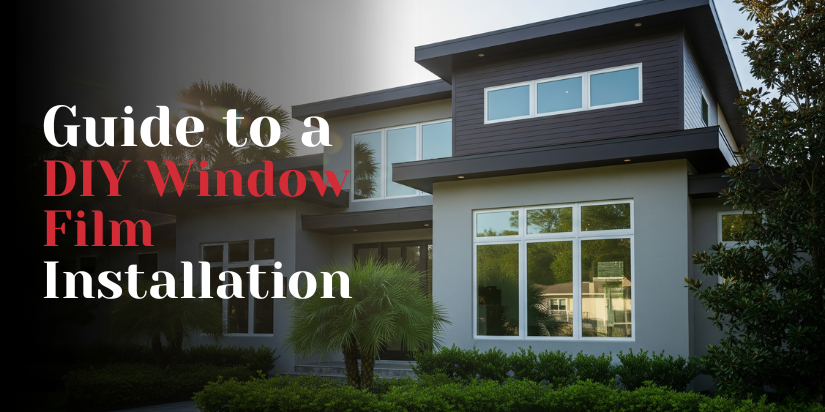An Introduction to Residential Window Film Technology
As specialists working with homeowners across Jacksonville, we often find the conversation about window film starts with a simple goal: reducing heat, adding privacy, or cutting down on that intense Florida glare. But it’s essential to understand that modern architectural film is far more than a simple tint. It’s a highly engineered product, a strategic investment that enhances your property’s performance, protection, and value. Understanding the technology behind the film is the first step toward making a truly informed decision for your home.
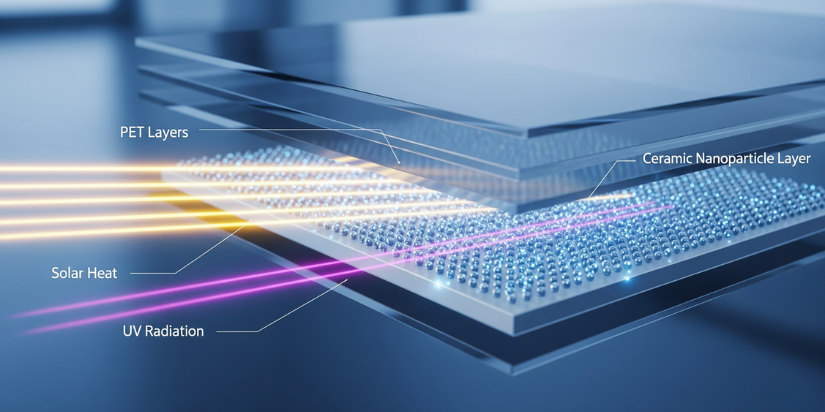
The Science Behind the Film: More Than Just Tint
At its core, a high-quality tinted window film for home use is a complex laminate. Manufacturers make it from multiple layers of Polyethylene Terephthalate (PET). This material is chosen for its optical clarity and incredible durability. Through advanced processes like sputtering—a vacuum-coating technique that embeds microscopic metallic or ceramic particles—these thin sheets are transformed into powerful barriers that selectively reject solar heat, block up to 99.9% of damaging UV rays, and can even reinforce the glass itself.
A Homeowner’s Taxonomy of Window Film Solutions
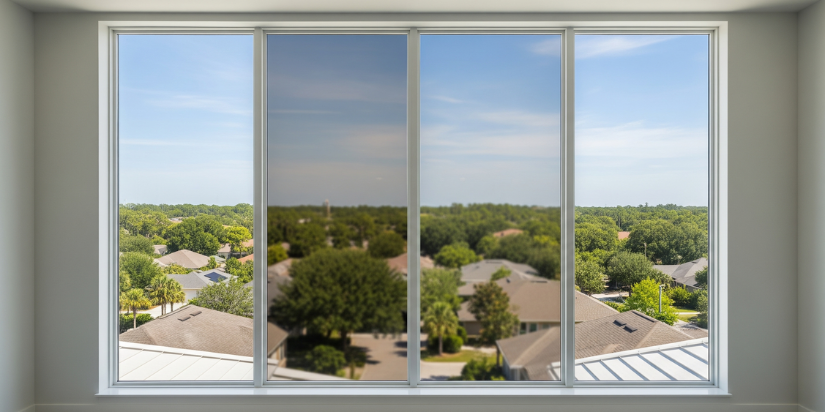
The market can be confusing. To clarify, let’s categorize films by their material composition, as this dictates their performance.
- Dyed Film: The most basic option. It uses dye to absorb some heat and reduce glare, but has limited heat rejection and is prone to fading and discoloration in the Jacksonville sun.
- Metalized Film: These films use metallic particles to reflect heat. While effective, a major drawback for Jacksonville residents is their potential to interfere with cellular and radio signals, a critical concern during hurricane season.
- Carbon Film: A significant step up, carbon film offers excellent heat rejection without signal interference. It provides a unique matte finish and is highly durable against fading.
- Ceramic Film: This is the pinnacle of current technology. Using non-metallic, non-conductive ceramic nanoparticles, these films offer maximum heat and UV rejection without any signal interference or mirroring. For homeowners seeking top-tier performance, ceramic is the premium choice.
Functionally, these materials are used to create films for specific needs, such as Solar Control, UV-Blocking, Privacy, and, critically for our region, Safety Window Film.
Core Benefits for the Jacksonville Homeowner
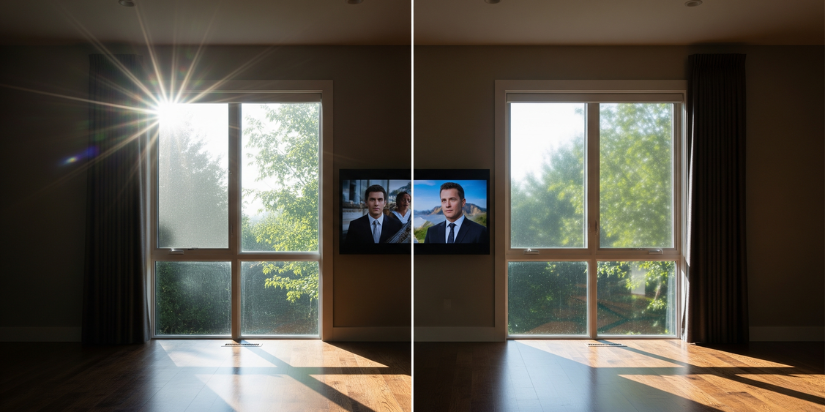
The advantages of installing a quality window film in Jacksonville, FL are tangible and directly address our local challenges:
- Energy Savings: By rejecting a significant portion of solar heat, window film reduces the strain on your AC system, leading to lower electricity bills—a clear return on investment.
- UV Protection: The intense Florida sun fades furniture, floors, and artwork. Film acts like sunscreen for your interiors, blocking nearly all harmful UV radiation.
- Comfort & Glare Reduction: Film eliminates hot spots near windows and cuts harsh glare, making your living spaces more comfortable and usable throughout the day.
- Privacy & Security: Gain daytime privacy without sacrificing natural light. Furthermore, a professionally installed safety window film holds shattered glass in place, providing a robust barrier against storm debris and potential intruders.
Comparison of Residential Window Film Types
| Film Type | Key Characteristics | Jacksonville-Specific Considerations |
|---|---|---|
| Ceramic | Non-conductive nanoparticles. Highest optical clarity. Superior heat & UV rejection. | Ideal. Maximum performance for heat/humidity. No cell signal interference during hurricanes. Compliant with most HOA rules. |
| Carbon | Microscopic carbon particles. Matte finish. Excellent heat rejection. | Excellent. A strong alternative to ceramic. No signal interference. Good aesthetic for modern homes. |
| Metalized | Microscopic carbon particles. Matte finish. Excellent heat rejection. | Excellent. A strong alternative to ceramic. No signal interference. Good aesthetic for modern homes. |
| Dyed | Dyes mixed in adhesive. Least expensive. | Not Recommended. Limited heat rejection is insufficient for Jacksonville’s climate. Prone to fading/discoloring.. |
| Security | Thicker polyester film (4-14 MIL). Stronger adhesive. | Highly Recommended. Provides critical protection against flying debris in hurricanes. Can be combined with solar control properties. |
How to Install Window Film Yourself: The DIY Pathway
The idea of a DIY window film project is often marketed as a simple, cost-saving weekend task. However, this perception dangerously underestimates the technical precision required. In reality, the margin for error is virtually zero. A single mistake can turn a home enhancement into a permanent, visible flaw.
Common Mistakes When You Install DIY Window Film
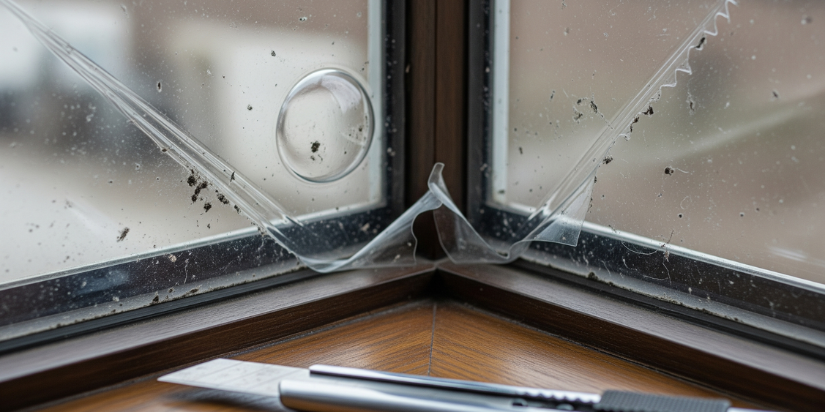
Success is determined long before the film touches the glass. The process demands a specific toolkit, a precise application solution (water and a pure soap like baby shampoo), and a controlled environment. Here in Jacksonville, our high heat and humidity are direct adversaries. Heat causes the application solution to evaporate too quickly, while humidity drastically slows the curing process, inviting bubbles and peeling.
The most common and unforgiving mistakes include:
- Contamination: A single speck of dust, lint, or hair trapped under the film becomes a permanent, ugly blemish. Professional installers work in meticulously controlled conditions to prevent this.
- Crinkling and Creasing: Consumer-grade films are often thin and unforgiving. Once a hard crease is formed, it’s permanent, and the piece of film is ruined.
- Bubbles and Peeling: These are the tell-tale signs of an amateur job, resulting from improper squeegee technique or moisture seeping back under the edges before the adhesive fully cures.
- Poor Trimming: Jagged, uneven edges from a dull blade not only look unprofessional but create a weak point where peeling will inevitably begin.
A botched DIY window film project means a total loss of money and time, and often requires hiring a professional to remove the failed film before starting over—making the attempt more expensive than a professional job from the start.
Why Professional Window Film Installation is Often Better
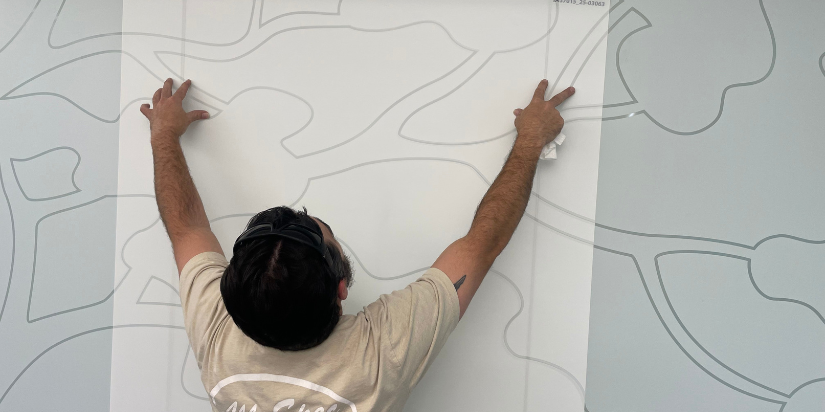
Opting for a professional window film installation is an investment in quality, longevity, and peace of mind. The value goes far beyond convenience; it’s about a guaranteed, superior outcome.
Quality, Longevity, and Economic Sense
The difference is stark. Professionals have access to higher-grade, more durable films from world-class manufacturers—products not available in retail stores. The skill of a trained technician, honed over thousands of hours, ensures a flawless, bubble-free application every time, even on complex windows.
While a DIY job may fail within 1-3 years, a professional installation is engineered to last for decades, often backed by a lifetime residential warranty. When you factor in the risk of failure and the much longer lifespan, the long-term cost of professional work is often significantly lower than repeated DIY attempts.
The Ultimate Differentiator: Comprehensive Warranties
This is the most critical distinction. DIY kits come with no warranty on the installation outcome. If you fail, you bear 100% of the loss. In contrast, reputable installers and manufacturers stand behind their work. A company like All Spec Sun Control provides a comprehensive warranty that typically covers both the replacement film and the labor for reapplication in the event of defects like bubbling, peeling, or discoloration. This transfers all risk from you, the homeowner, to the provider.
DIY vs. Professional Installation: A Head-to-Head Comparison
| Metric | DIY Installation | Professional Installation |
|---|---|---|
| Material Quality | Consumer-grade, often thinner, less durable films. | Professional-grade, thicker, more durable films from top manufacturers. |
| Installation Precision | High risk of bubbles, creases, contamination, and poor trimming. | Flawless, bubble-free finish with perfect edges. |
| Expected Lifespan | 1-3 years before potential failure. | 10+ years; often a lifetime warranty for residential applications. |
| Warranty Coverage | Typically none. Homeowner assumes all risk. | Comprehensive manufacturer & installer warranty covering materials and labor. |
| Climate Suitability | Very difficult to achieve good results in Jacksonville’s high humidity. | Professionals use techniques to mitigate climate challenges. |
Installing Window Film: The Jacksonville Context
The unique combination of climate and regulations in Jacksonville, FL, makes the choice for professional installation even more clear-cut.
Climate-Driven Imperatives: Heat, Humidity, and Hurricanes
Our climate isn’t just a backdrop; it’s an active force. The intense solar load makes high-performance solar control film a necessity for comfort and energy management. The seasonal hurricane risk makes safety window film a prudent investment to protect your home’s most vulnerable points. And as discussed, our pervasive humidity is a major technical challenge for installation—one that professionals are trained to overcome.
Navigating HOA Rules and Florida’s Solar Rights Law
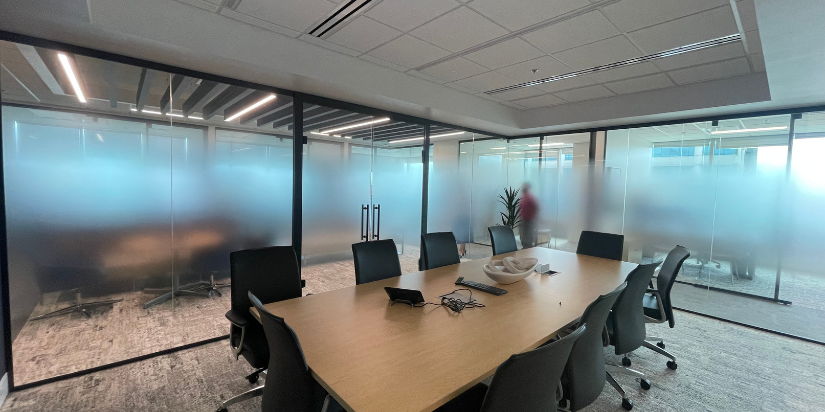
A powerful state law, Florida Statute 163.04, protects your right to install energy-saving devices, including solar-rejecting window films. An HOA cannot ban them outright. However, they can enforce reasonable aesthetic guidelines, particularly regarding reflectivity. An inexpensive, highly reflective DIY film could easily violate your community’s rules, leading to fines and a costly removal order. An experienced local installer is an invaluable guide, helping you select a high-performance, low-reflectivity ceramic or carbon film that complies with local HOA standards, ensuring you get the benefits without the hassle. This also applies to the selection of decorative window film, where an expert can help match aesthetics with performance.
Final Analysis and Strategic Recommendation
When all factors are weighed—risk, cost, quality, and the specific challenges of our Jacksonville environment—the evidence points to one rational conclusion.
The Analyst’s Verdict: A Risk Management Imperative
Ultimately, the DIY path for window film is a high-risk gamble. It has a significant chance of aesthetic failure and financial loss. The professional pathway, on the other hand, is a low-risk, high-reward investment. It is a predictable, insured transaction that delivers a high-quality asset to your home. This asset provides quantifiable returns in energy savings, tangible benefits in comfort, and improved security. Plus, the investment is protected by a robust warranty, ensuring your peace of mind.
In the demanding environment of Jacksonville, hiring a qualified, local professional for your window film installation is the only course of action that aligns with sound property management and long-term value creation.
Actionable Next Steps for Jacksonville Homeowners
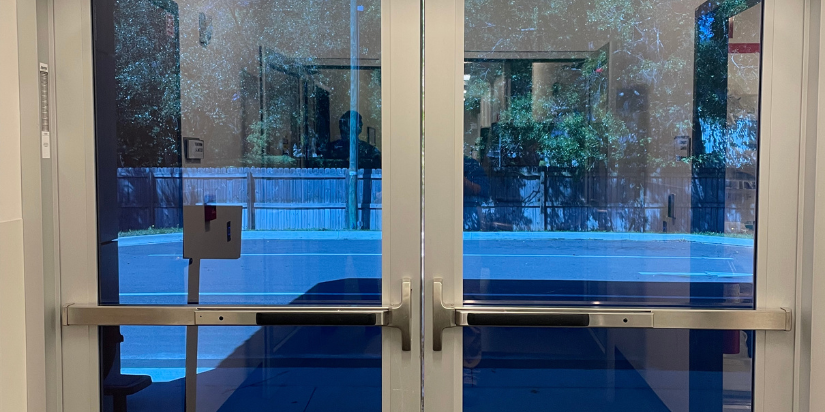
- Initiate Contact: Reach out to two or three top-rated, local companies for estimates. Look for established businesses with strong reviews.
- Schedule In-Home Consultations: This is a critical step. Seeing physical film samples against your own windows and in your home’s specific lighting is invaluable.
- Discuss Your Goals: Be clear about your primary objectives—whether it’s extreme heat rejection for west-facing windows, privacy, or hurricane protection with a safety window film.
- Verify HOA Compliance: Ask the consultant for specific product recommendations that will meet your HOA’s rules on reflectivity and darkness.
- Review the Quote and Warranty: Finally, ensure the written quote is all-inclusive, detailing the cost of materials and labor. Request a copy of the manufacturer’s warranty and confirm that the installer’s labor is also covered.
Frequently Asked Questions
Q1. How long does a professional window film installation take?
Ans: For an average-sized home, a professional installation can typically be completed in one day. The exact time, however, depends on the number and complexity of the windows.
Q2.Will window film make my house too dark?
Ans: Not at all. Modern window film technology, especially with high-quality ceramic films, is designed to reject heat and UV rays without significantly reducing visible light. You can choose from many tint levels, some of which are virtually clear, to maintain your home’s natural brightness.
Q3.How do I clean my tinted windows?
Ans: After the film has fully cured (usually about 30 days), you can clean your windows normally. It’s best to use a soft cloth and a simple cleaning solution without ammonia. Most standard glass cleaners are perfectly safe, but avoiding harsh materials will ensure the film’s scratch-resistant coating lasts for years.

